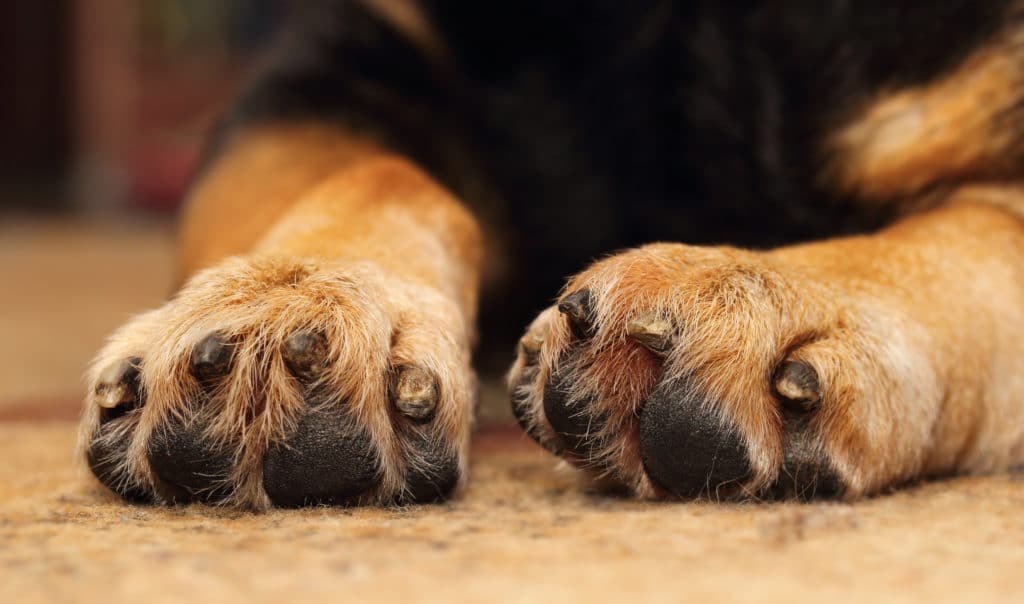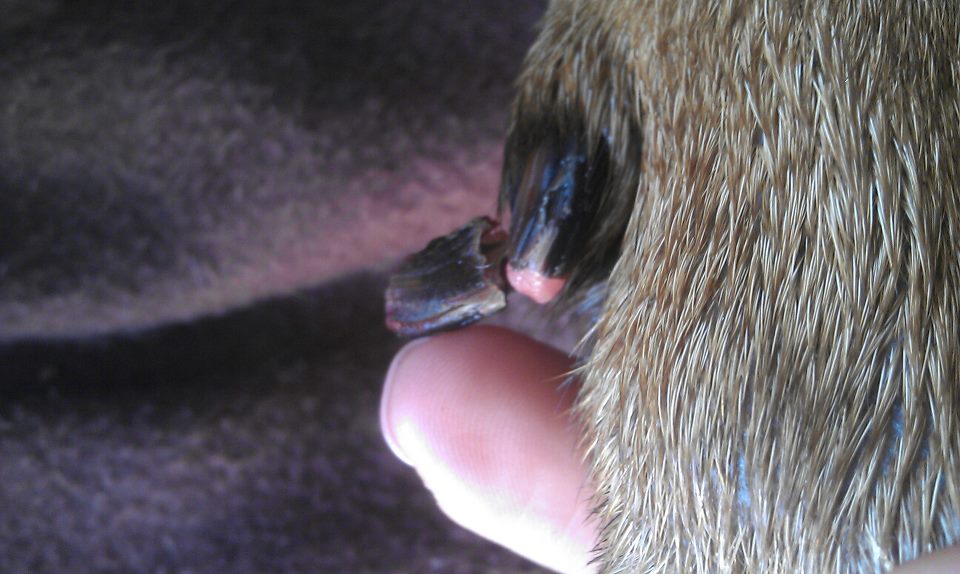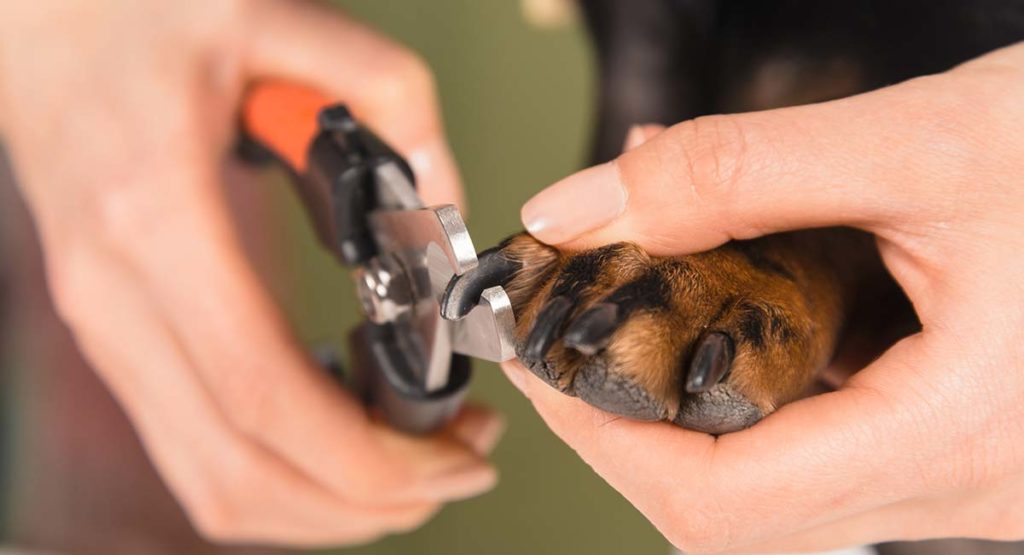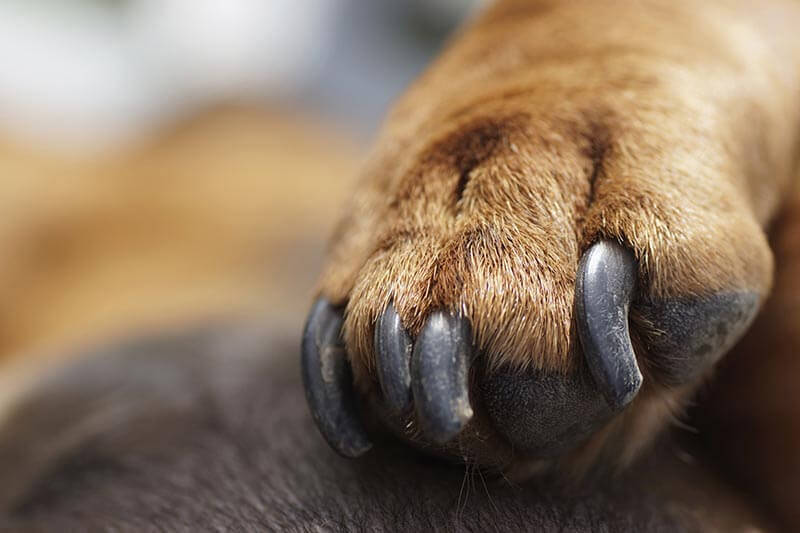Dog injuries that result in dog nails being separated from their quicks are very common. These injuries can be treated at home or taken to the vet.
It can be difficult to understand that your dog may be suffering from an injury. As a pet owner, you have the responsibility to comfort your dog and ensure their injury heals properly.
You may need to visit a veterinarian to remove a dog’s quick nail. However, you can do some things at home. Cut off the broken nail and stop bleeding. Bandage the wound to prevent infection.
Dog owners must be able to recognize the signs and care for this common injury.
Contents
- 1 What’s a Dog Quick?
- 2 Dog Quickly Exposed – What can you do?
- 3 What Causes a Dog’s Nail to Break?
- 4 What are the Symptoms of a Dog’s Nail That is Not Attached to the Quick?
- 5 How to Treat a Broken Dog Nail
- 6 1. Have a look at the Area
- 7 2. Make a Portion of the Nail
- 8 3. Stop Bleeding
- 9 4. Infect the Region
- 10 5. You Must Change the Bandage Every Day and Keep the Area Clean
- 11 How To Treat A Dog’s Broken Nail At Home
- 12 How Can I Prevent my dog’s Nails From Breaking?
- 13 Pet First Aid: What Is It Important?
- 14 F.A.Q.
What’s a Dog Quick?
The outer cuticle and the outer shell of a dog’s claw are the same.
The nerves and blood vessels that make up the “quick” are held in the cuticle.

Blood leaking from the broken nail is one way to determine if the quick has been exposed.
It can be very painful for your dog, as you probably guessed.
Dog Quickly Exposed – What can you do?
What to do when a dog nail broke? Examine the broken nail carefully.
Are you noticing any bloody oozing?
If so, the poor dog has bitten its nails.
1. Take a Look at the Paw
Use a clean cloth to gently smear the nail for a few seconds to stop it from bleeding.
Slowly lift the paw to check how badly your dog is hurt.
There will be less bleeding if the wound is located just below the quick.
You might consider muzzling or retraining your dog to stop him from moving.

Canines hate pain and will nip at anyone who touches their paws.
Start by calming the dog and checking for any dangling nails.
2. Any Dangling Nails Should Be Cut
You can remove any dangling nails without affecting your quick.
This stops any bleeding or pain on the paw.
Warm water and pet antiseptic can be used to sterilize the wound.
You must be careful not to cause pain to the pup.
3. Stop the Bleeding
Stop bleeding if it continues.
You can use styptic powder that contains Benzocaine or Ferric subsulfate as a way to do this.
Benzocaine, synthetic anesthesia, is used to relieve pain by numbing sensory nerves in the quick.
Ferric subsulfate helps to stop bleeding.
What Causes a Dog’s Nail to Break?
There are many ways that dogs can injure their nails. This injury can be caused by simple, everyday actions, such as a dog jumping over a log or snagging on the floor during playtime. This is difficult to predict.

Dry nails in older dogs can lead to more breakage. Nail breakage can also occur if the nails of your dog are longer than normal. A longer nail can catch more easily.
Nail trimming can cause injury to your dog if it is done too close to the skin. You might hear your dog yelp and the nail may bleed.
What are the Symptoms of a Dog’s Nail That is Not Attached to the Quick?
Dogs’ nail bed is very sensitive so they will often vocally notify you if their nails break or split. Other common symptoms include excessive licking, bloody paws, and limping.
It does not necessarily mean your dog does not require attention if the nail is pulled from its quick. To reduce the chance of infection, it is important to treat the nail immediately if it is broken.
How to Treat a Broken Dog Nail
There are four steps to the treatment:
- Take a look around the area.
- Remove any broken or damaged parts of the nails
- Stop the bleeding
- Disinfecting.
You can take the nail to the vet after you’ve completed these steps. You must immediately provide first aid because injured nails can be painful, bloody, and susceptible to infection. This is what vets recommend.
1. Have a look at the Area
Once you have muzzled your pet, look closely at the area. You will see reddening, swelling, and bleeding in the area. The quick area of the dog’s paw should be kept away from your fingers. Assess the nail to determine if it needs to be removed or if you can stop the bleeding by skipping this step. If the nail is split in half, you will need to pull it out of its hanging position.

Dogs can react to pain. Stress can cause even the calmest dog to bite its owner. Before applying a muzzle, make sure your dog isn’t suffering from any respiratory distress. If your dog is suffering from labored breathing, hyperventilation, hyperventilation, changes in gum color, vomiting, gagging, or hacking, you should not use a muzzle. This could lead to asphyxiation and aspiration.
2. Make a Portion of the Nail
This is where the problems start. It is possible for a nail that has been split in half to hang off the wall. This can be dangerous and should be addressed immediately. This can continue until the nail is completely broken and hanging. This will allow the nail to heal and allow it to grow. Although it will cause pain to your dog, the procedure should only take a few seconds. This procedure should be performed by your veterinarian to ensure safety. When they are hurt, dogs can bite. To avoid infection, you need to clean up the affected area. Most dogs feel better after the affected area has been cleaned up.
Apply a bandage to the area, then visit the vet to get tranquilizers or local anesthesia for your dog.
The tip of your nail is right at the end of your toe. Your dog may be injured if you don’t know what to do. Your vet can safely remove any protruding or hanging nails to make sure your dog’s nails heal properly. This is the preferred method.
3. Stop Bleeding
If you notice a lot of blood, don’t panic. Blood vessels are located in your bloodstream and can easily be stopped. Stop the bleeding. Your vet should be notified if the bleeding continues. Dobies with Von Willebrand disease is more susceptible to abnormal clotting.
You would want to keep a styptic pen-like Kwikstop or a tablet for styptic emergencies. It is important not to feel the need for a second check to ensure that the bleeding has stopped. This could lead to the bleeding returning. John A. Bukowski suggests that you keep the pressure steady for 5-10 minutes.
Keep your dog entertained and away from the areas. You can give your dog massages to his stomach, or let him lick a spoon filled with peanut butter.
4. Infect the Region
While the bleeding should have completed the task of cleaning the wound, it is worth taking extra precautionary measures just in case. Janet Tobiassen Crosby says that a warm bath can remove any debris.
Hydrogen peroxide can worsen things. You can either use plain Neosporin or a diluted Betadine solution. You can then bandage the affected area. You can then bandage the area according to Expert Village’s instructions (see video below). Don’t tighten it.
A permanent bandage can only be applied by a licensed veterinarian. You must ensure that you do not block blood flow if you have to give first aid while the animal is in transit to the vet. To stop nails from getting too fastened, you can apply pressure.
5. You Must Change the Bandage Every Day and Keep the Area Clean
It doesn’t matter if you use gauze or a gauze cover. Just make sure that the dressing is kept clean and changed regularly. Infection can be present in many ways.

Contact your veterinarian if you experience symptoms that persist for more than a few weeks. After several days of proper care, the nail injury should heal quickly.
You can make sure your dog stays down by soaking the dog’s paw in warm water and Hibiclens for 20 minutes twice daily. One of our dogs wears his muzzle to keep the dog’s mouth closed while he soaks. It’s a great way for dogs to learn!
How To Treat A Dog’s Broken Nail At Home
An injury to the nail of a dog’s foot is not always an emergency. It doesn’t always require the attention of a veterinarian. Although it might seem like the worst kind of injury, it is actually the best. This issue can be treated even though it’s painful.
It is possible for you and your dog both to go back to normal after the treatment.
Is your dog suffering from a broken dog nail or is it just you? Follow the steps below to help your dog.
- You must secure your dog and ensure that he doesn’t bite or lick the will. This can be done with a blanket or muzzle.
- Get gauze or clean bandages.
- Apply a little pressure to the gauze. Hold the wound for approximately 10 minutes.
- If this doesn’t stop bleeding then apply styptic powder to the wound.
The styptic powder is very effective in treating the wound. It’s strong enough to stop bleeding from the wound right away. Baking powder or cornstarch are good options. It is a good idea to have these ingredients at all times. These ingredients can be purchased at your local pet shop, as well as many online retailers.
Did you find that your dog’s nail is broken but not completely separated? You will need to remove the nail. If the nail is already loose, don’t try to remove it yourself. It’s just like removing a baby tooth. If you are unsure, it is best to call a vet immediately.

You can also take your dog to a professional for care. It is a problem when your dog’s broken nails are damaged or bleeding, even though they are still attached. This can lead to infection or lingering pains in your dog’s feet if it isn’t handled correctly. You should consult a veterinarian at this point.
Do not attempt to do this yourself. Nail problems can cause frustration for both you and your dog. It’s unfortunate how common nail damage can be. This is a serious problem for dogs.
How Can I Prevent my dog’s Nails From Breaking?
Excessive rough play and long nails can lead to a broken or split nail. Sometimes nutrition can cause weaker nails, which can lead to easy breakage. You can check the health of your puppy’s nails by trimming them at least once a month.
Shorter nails are less likely to get caught on outdoor or indoor rough ground. Ask your veterinarian for a brief training session if you have any questions about your pet’s nail trimming skills.
You can help your vet or technician trim your dog’s nails correctly so that you can do it at home. Alternately, you can arrange regular nail trimmings with your veterinarian or local pet groomer. Sometimes it is easier to let the groomer do the dirty work and not stress about it. You should stick to a schedule to ensure your dog’s nails grow properly.
Pet First Aid: What Is It Important?
It would be so helpful if every pet owner would sign up for a pet first-aid class. As a former vet assistant, and as a pet sitter and dog trainer, it is helpful to take a pet first aid classes. This is not something I recommend for professionals, but it is recommended for pet owners.
There are many examples of how this can be helpful since you never know what your life might throw at you. Because the pet care industry is constantly improving, most first aid programs require that you recertify every two years. Your doggie CPR practice today could change tomorrow.
F.A.Q.
Will a broken dew claw heal itself?
Dew claws will heal themselves, but you have some options before going to the vet. Dog owners need to be aware of these important facts. It is not unusual for your dog’s nail to be broken. This can lead to a lot more bleeding and increase the risk of infection.
How do you treat a ripped dew claw?
Here’s what to do if your dog has a broken claw.
1. Wrap the paws in gauze to keep dirt and liquids out
2. For support, wrap an ace bandage tightly around your paw.
3. You can keep your dog calm and relaxed during the recovery process by giving them painkillers or treats.
How long does it take for a dog’s nail quick to heal?
Thank you for your question. This is the quick part of the nail. The actual top of the nail is gone. It will heal and a new nail should be grown within a few weeks. This area might be sensitive so don’t touch it.
Why are my dogs nails separating from the quick?
There are many ways that dogs can injure their nails. is another common reason for nail breaking. If your dog’s nails have a longer length than the average, a longer nail may catch more easily. Nail injury can also result from a dog’s nails being cut too close to their edges.
